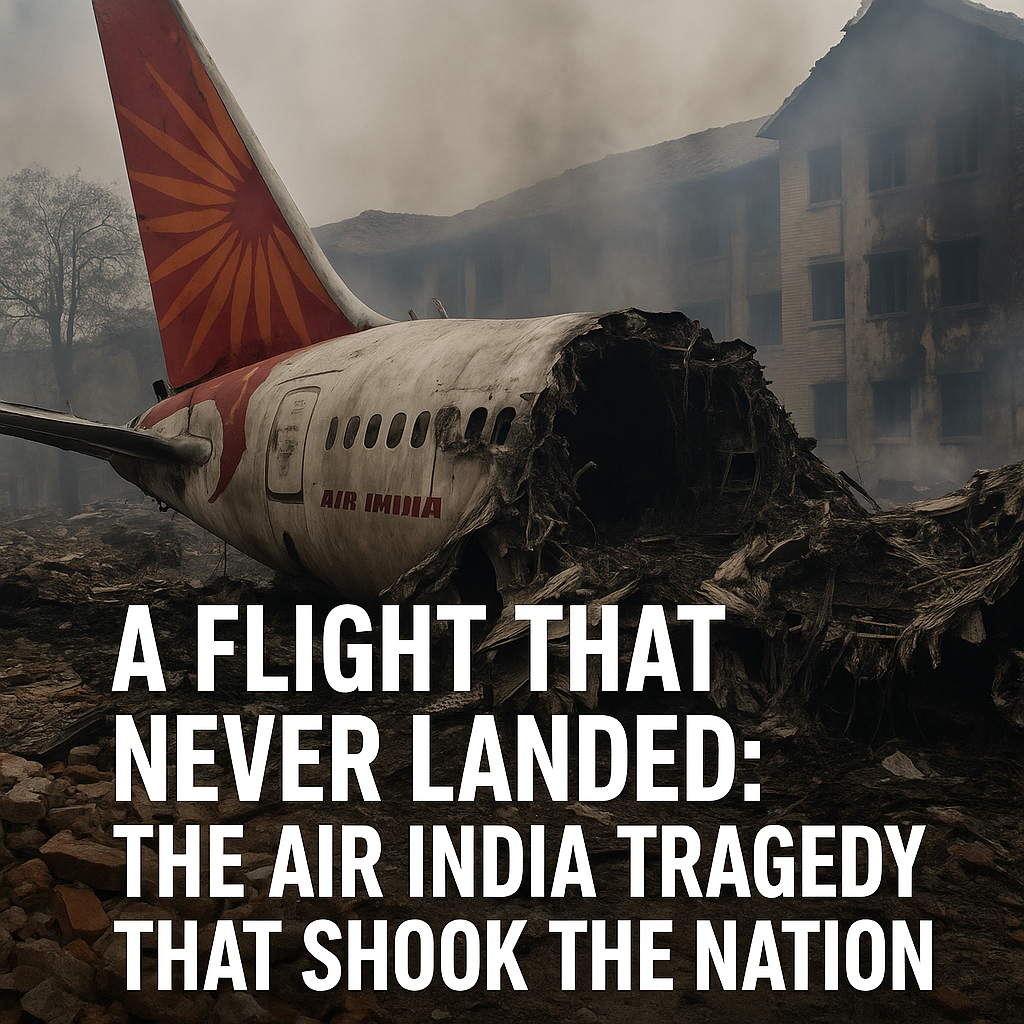
In what has become one of the darkest days in Indian aviation history, Air India Flight AI171, a Boeing 787 Dreamliner, crashed shortly after takeoff from Ahmedabad’s Sardar Vallabhbhai Patel International Airport on June 12, 2025. Bound for London Gatwick, the flight was carrying 242 people, including 230 passengers and 12 crew members. Tragically, all but one lost their lives.
The aircraft nose-dived into the doctors’ hostel of B.J. Medical College, reducing a vibrant building to smoldering rubble. Over 28 people on the ground were also killed, many of them young medical interns, while dozens more were severely injured.
A Nation in Mourning
It was a routine afternoon until it wasn’t. Eyewitnesses reported a loud roar, followed by a sudden and horrifying crash. What should have been a standard international journey turned into a heartbreaking catastrophe within just three minutes of takeoff.
The only survivor, Vishwashkumar Ramesh, a 32-year-old British national of Indian origin, sat in seat 11A. Miraculously, he crawled out of the mangled debris and was found wandering in shock. Doctors treating him have described his survival as “nothing short of a miracle.”
The Sequence of Events
- The flight took off around 1:38 PM IST.
- It reached an altitude of just over 600 feet before nose-diving at a steep angle.
- The pilot managed to send a distress signal, but it was too late.
- Within minutes, the aircraft crashed, tearing through the medical college building.
Reports suggest the aircraft’s landing gear never retracted, and the flaps remained extended, both of which are abnormal for a plane in ascent. This raises questions about whether the aircraft experienced engine failure or severe electrical malfunction.
A Deadly First for the Dreamliner
The Boeing 787 Dreamliner had, until now, maintained a strong global safety record. The crash of VT-ANB marked the first fatal accident and total hull loss involving a Dreamliner. The aircraft had flown safely for over 41,000 hours since it was delivered in 2014.
The Investigation Begins
India’s Aircraft Accident Investigation Bureau (AAIB) is leading the probe, supported by international aviation bodies including:
- The U.S. National Transportation Safety Board (NTSB)
- Federal Aviation Administration (FAA)
- UK Civil Aviation Authority
- Boeing and GE Aerospace (the engine manufacturer)
Authorities have recovered the black boxes and are analyzing flight data to determine the exact cause of the tragedy.
Families Left Behind
Amid twisted metal and burnt belongings, family members of victims gathered, desperate for answers and some form of closure. DNA testing is underway to help identify the remains. The grief is unimaginable. Parents waiting for their children to land in London now hold only photographs and silent prayers.
Impact on the Aviation Industry
This disaster has global implications:
- Boeing’s reputation is under renewed scrutiny after prior manufacturing issues with its aircraft.
- Dreamliner inspections are expected worldwide.
- Financial markets responded swiftly—Boeing’s shares dropped by nearly 5% the same day.
- Regulatory bodies may re-evaluate oversight procedures for high-tech aircraft.
Frequently Asked Questions (FAQs)
Q1: Was anyone saved in the crash?
Yes. Only one passenger, Vishwashkumar Ramesh, survived. He is currently under medical observation.
Q2: What caused the crash?
The exact cause is still under investigation. Preliminary data suggests possible engine failure or system malfunction, but official conclusions will follow the black box analysis.
Q3: How many people died in total?
A total of 269 lives were lost—241 on board and 28 on the ground. Over 60 people were injured.
Q4: Was this Boeing 787’s first crash?
Yes. This marks the first-ever fatal crash involving a Boeing 787 since its launch in 2011.
Q5: Who is investigating the crash?
The investigation is being led by India’s AAIB, with support from NTSB (USA), FAA, UK aviation authorities, and Boeing/GE Aerospace.
Q6: How is Air India responding?
Air India, now under the Tata Group, is coordinating with authorities, providing compensation, and offering support to affected families.
Final Thoughts
The crash of Air India Flight AI171 is a painful reminder of how fragile life can be. As investigators work to uncover the truth, the nation mourns for the lives lost and the futures stolen. It’s a wake-up call for the aviation industry to re-examine safety measures, engineering integrity, and emergency response preparedness.
While one man’s miraculous survival gives a glimmer of hope, the scars left behind by this tragedy will take a long time to heal.
